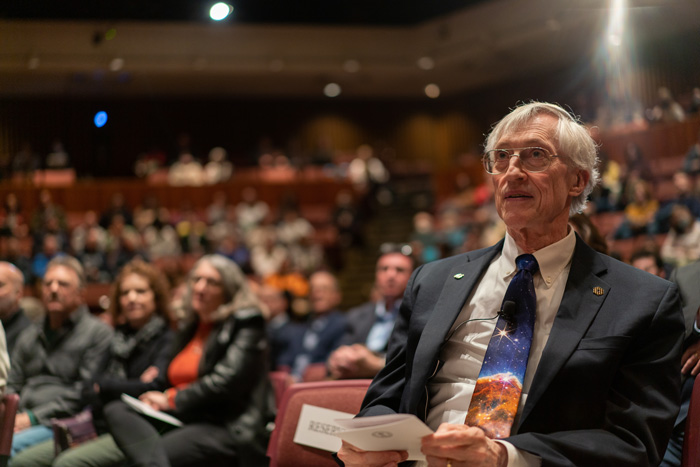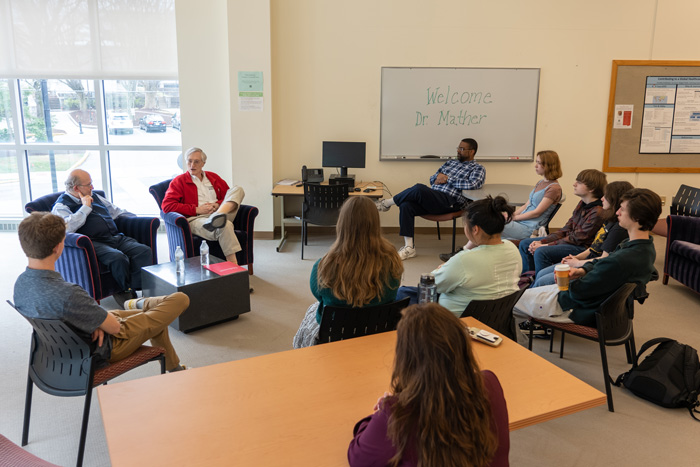NASA's John Mather Delivers 71st Priestley Award Lecture

Seen here awaiting his introduction, John Mather gave a stirring lecture in ATS about his work on the James Webb Space Telescope and his lifelong passion for space and physics. Photo by Dan Loh.
Nobel Prize-winning astrophysicist discusses his nearly 30 years of work on the groundbreaking James Webb Space Telescope
Last night, Nobel Prize-winning astrophysicist John Mather received Dickinson’s 71st Priestley Award and discussed his nearly 30 years of work as the senior project scientist on the groundbreaking James Webb Space Telescope (JWST). During his lecture, “Opening the Infrared Treasure Chest With the James Webb Space Telescope,” Mather spoke about his passion for astronomy, something that began when he was a child.
“Why am I so excited by projects like this? These questions have been on my mind since I was little,” he told the rapt audience, with prompts such as “Where did we come from?” and “How far can we go?” on-screen. “I learned about physics from books that came around on the Bookmobile.”
Born a year and a day after Hiroshima, Mather described himself as “a child of the atomic age, which makes you think.” And he’s done a lot of thinking across his career, leading to his receiving the 2006 Nobel Prize for Physics (with George F. Smoot, UC Berkeley) for precise measurements of cosmic microwave background radiation, the remnant of the Big Bang.
During his visit to campus, Mather also spent time in small group settings in various classes with students in the physics and astronomy department, fielding questions and discussing his career and the field.

NASA's John Mather, in red, speaks with a small group of students, flanked by Professor of Physics & Astronomy Robert Boyle (left) and Associate Professor of Physics & Astronomy Windsor Morgan. Photo by Dan Loh.
Mather has now been the lead scientist on the JWST for nearly 30 years, noting that the project required the work of three international space agencies and 20,000 engineers, scientists and technicians to become a reality. As far as other, more far-flung, realities, at the conclusion of his lecture, Mather circled back to the question “How far can we go?”
“Everyone wants to know, can we get out of here? Well, the answer is yes, but not very far,” he said, explaining that Mars is as far as humans can go while “robots can go anywhere”—and they’re already been to all of the planets in our solar system. The rest of the universe is another matter, though.
“Even if we have smart robots in the year AD one billion, they will still need to be very patient to get themselves to the next star,” he said. “I’d like to be here when that happens.”
To watch the recorded livestream of Mather's lecture, click here.
The Joseph Priestley Award is presented by Dickinson College in memory of Joseph Priestley, discoverer of oxygen, to a distinguished scientist whose work has contributed to the welfare of humanity. The award, first presented in 1952, recognizes outstanding achievement and contribution to our understanding of science and the world.
TAKE THE NEXT STEPS
Published March 29, 2023